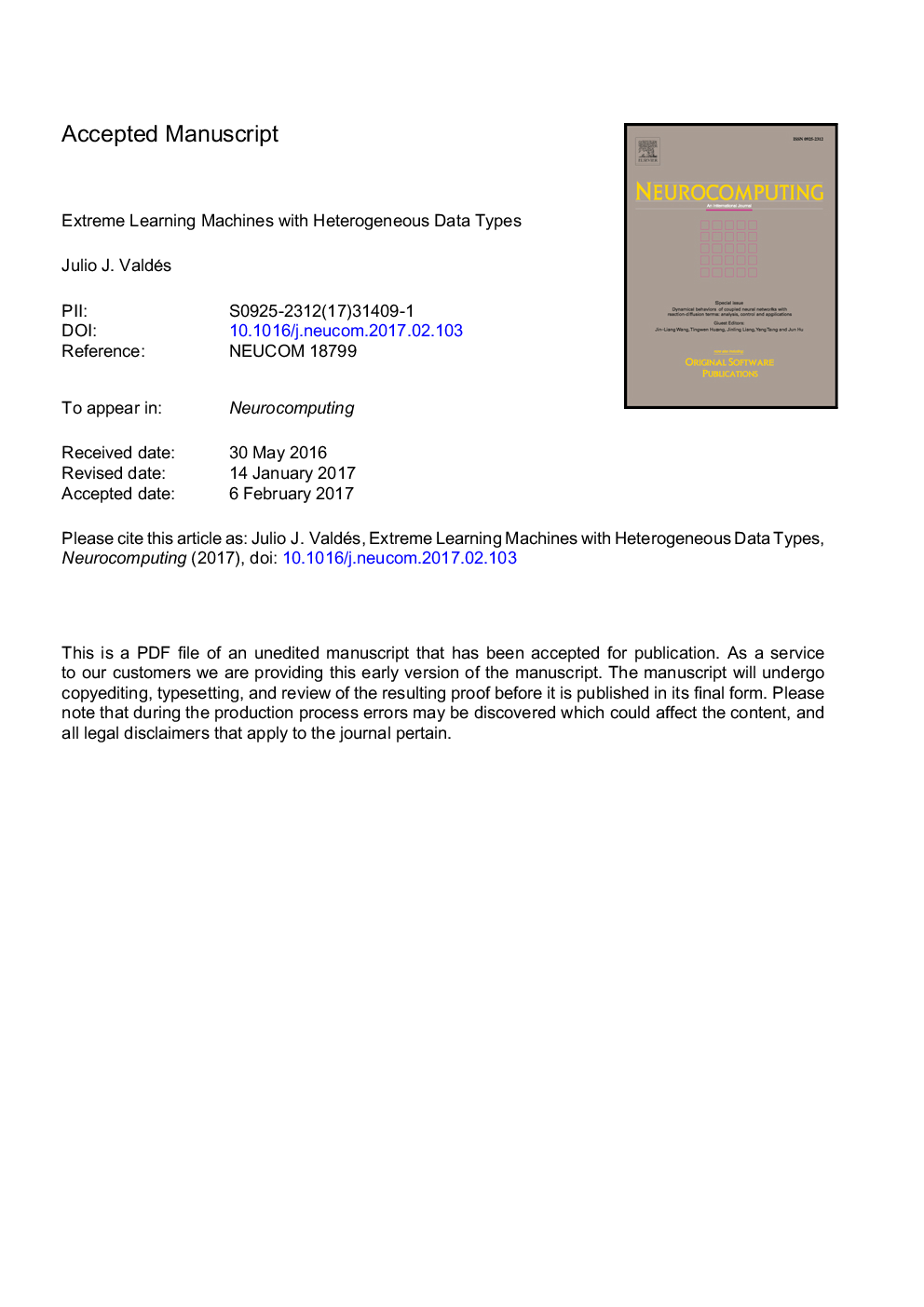| Article ID | Journal | Published Year | Pages | File Type |
|---|---|---|---|---|
| 6864719 | Neurocomputing | 2018 | 48 Pages |
Abstract
Extreme learning machines (ELM) are interesting computational algorithms because of their simplicity, their good performance and their speed. They can be extended for processing information composed of heterogeneous data types (HT-ELM), capable of addressing classification and regression problems with complex data. Two approaches are discussed: one works directly with the heterogeneous data and the other one transforms the information into simpler homogeneous spaces that preserve structural properties. In them, standard learning methods can be applied, including classical ELMs among others. Both approaches are illustrated using real world examples involving heterogeneous predictor variables composed of mixtures of nominal, ordinal, interval, ratio, fuzzy variables, and entire empirical probability distributions. In all cases HT-ELM and ELM models produced results that compare favorably with well-established methods.
Related Topics
Physical Sciences and Engineering
Computer Science
Artificial Intelligence
Authors
Julio J. Valdés,
